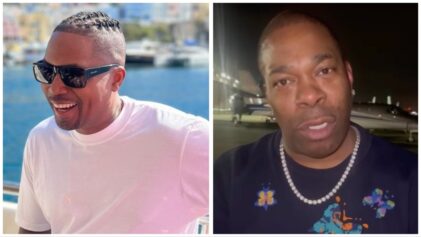If you’re wondering why hip-hop has often been angry, sneering, nihilistic and dystopic, you can blame the war on drugs, and how it feels to be on the wrong side of it.
President Nixon announced a war on drugs, but it was President Reagan who started the modern battle in 1982, when hip-hop was in its infancy. This fight would not only shape the black community but also mold hip-hop, a music and culture whose undercurrent remains black male anger at a nation that declared young black men monsters and abandoned them, killing any chance they had at the American Dream.
Hip-hop’s journey between those two mind-sets happened as the unemployment rate among black men soared to twice the level among whites, passing 21 percent in 1983. A year later, the FBI’s antidrug funding increased more than tenfold — just in time for the start of the crack epidemic in 1985. (That’s right, the war on drugs was declared before the crack epidemic began.) The battle helped bolster Reagan’s tough-guy image; he was a valiant hero fighting wild black criminals. “Blame Reagan for makin’ me into a monster,” Jay-Z rhymed on the 2007 song “Blue Magic.” “Blame Oliver North and Iran-contra/ I ran contraband that they sponsored.”
The prevalence of drugs alongside the dearth of jobs made joining the drug trade hard to turn down.It was a road many young black men chose because they lacked better options. Crack, a sort of fast-food version of cocaine, allowed some the chance to earn as much as they would have by owning a McDonald’s franchise, when their only other option was working at one. The crack trade allowed some young men to support their families. In the 2001 song “Renegade,” Jay-Z rhymed about being a young dealer in the 1980s: “My pops left me an orphan/ My momma wasn’t home/ Could not stress to me I wasn’t grown/ Specially on nights I brought something home/ To quiet the stomach rumblings/ My demeanor 30 years my senior/ My childhood didn’t mean much, only raisin’ green up.”
MCs who grew up in the 1980s would brand themselves veterans of the drug trade because drugs dominated their economic possibilities, and those of an entire generation of young black men. But by the end of that decade, hip-hop had been transformed in response to a world filled with crack, rich and ruthless drug lords, militarized police forces, a level of violence not seen in the country since Prohibition, prison sentences as long as basketball scores, and lives ruined by a drug that was insanely addictive.
By the mid-1990s, the U.S. incarceration rate was the highest in the world, damaging or destroying countless black families. Studies show that the number climbed from the 1980s, when less than 500,000 Americans were imprisoned, through the 1990s, when more than 1.5 million were locked up. (Many of those who contributed to the rise were black men ensnared by the war on drugs: In 1995, 16 percent of non-college-educated black men in their 20s were incarcerated, and the percentage rose in the decade that followed.)
Instead of stories from detached bystanders, hip-hop swelled with gruesome first-person accounts of selling, addiction, gangs, guns, the police and prison — from KRS One, Ice-T, Public Enemy, Kool G. Rap, N.W.A. and others. These were tales from the war on drugs. In 1991, De La Soul released “My Brother’s a Basehead,” the true story of rapper Posdnuos’s brother who became a crackhead. The song is a metaphor for how crack invaded the black community. By then, the stories had to be in the first person — the drug was literally in the house.
Hip-hop is the product of a generation in which many black men did not know their fathers. How did these fatherless MCs construct their masculinity? For some, it was by watching and idolizing drug dealers. Many would make it as rappers by packaging themselves as former dealers — either because that is what they were or because that’s who they revered. I’m talking about the Notorious B.I.G., Nas, the Wu-Tang Clan, Jay-Z, Lil Wayne, 50 Cent, the Clipse, Rick Ross and others. By then, it seemed as though an MC needed to claim drug-trade stripes to earn acceptance among hip-hop’s elite.
In her 1999 book “The Color of Crime,” legal scholar Katheryn Russell-Brown speaks of the myth of the “criminalblackman,” coining a new word that smashes together two concepts already linked — incorrectly — in the American consciousness. The criminalblackman is supposedly the source of all crime, proof of the natural connection between race and criminality. She pointed out that, in the 1990s, whites comprised 70 percent of those arrested and 40 percent of the incarcerated, but that white crime did not reverberate outward to say something about the character of all white people. By contrast, black crime suggests something is wrong with the entire race.


